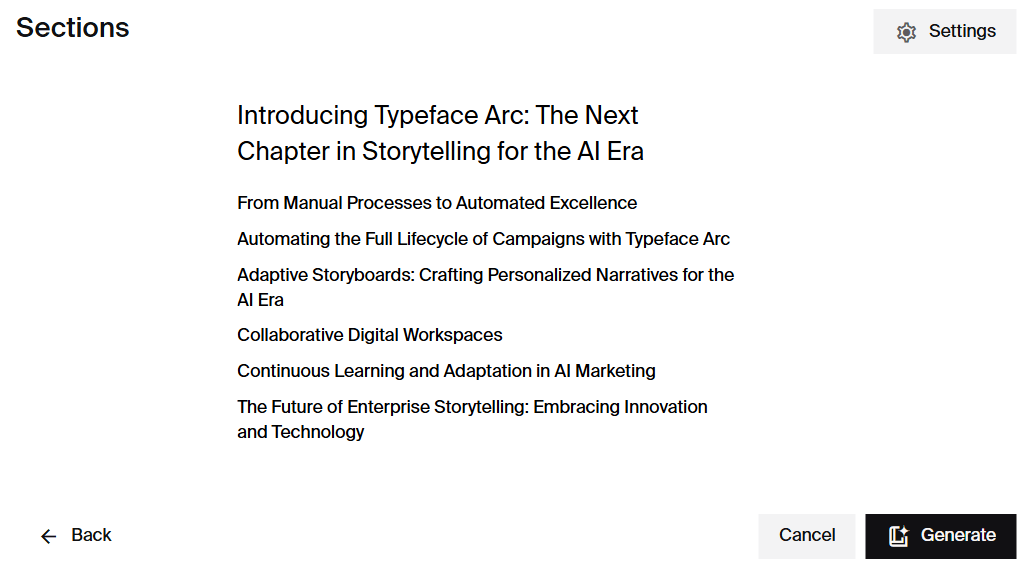AI at Work
How to Use AI Brand Voice Generator to Preserve Channel-Specific Voices

Ashwini Pai · Senior Copywriter
February 20th, 2025 · 7 min read

Your brand voice is crucial for building trust and setting your brand apart in the market. But maintaining and adapting this voice across different channels is a challenge. Marketers often spend hours each week rewriting the same message across social, blog, email, and more — each time adjusting the tone to fit the platform.
Every channel and author demands a distinctive voice. LinkedIn typically requires professionalism and thought leadership, while Instagram thrives on casual, engaging content. Your CEO and CMO may have different individual writing styles. Adapting to each of these can create a significant workload for marketing teams.
Typeface’s AI helps reduce the hours marketers spend manually writing or rewriting content in channel-specific voices. Train the AI model on your brand voice and it will generate marketing material that sounds like you or a key representative from your brand, such as your CEO. Our webinar on voice training with Typeface explains how it works — you can access the recording or read its gist below.
What sets our approach apart is our commitment to voice accuracy and brand alignment. While other writing tools support quick training, Typeface prioritizes a strong depth of training to ensure your brand's voice remains authentic and consistent. With Typeface’s advanced web scraping capabilities, you simply provide a URL, and our AI automatically identifies relevant content from linked-out pages (e.g. pulling several blogs from a blog homepage) to train and generate content based on your existing brand voice.
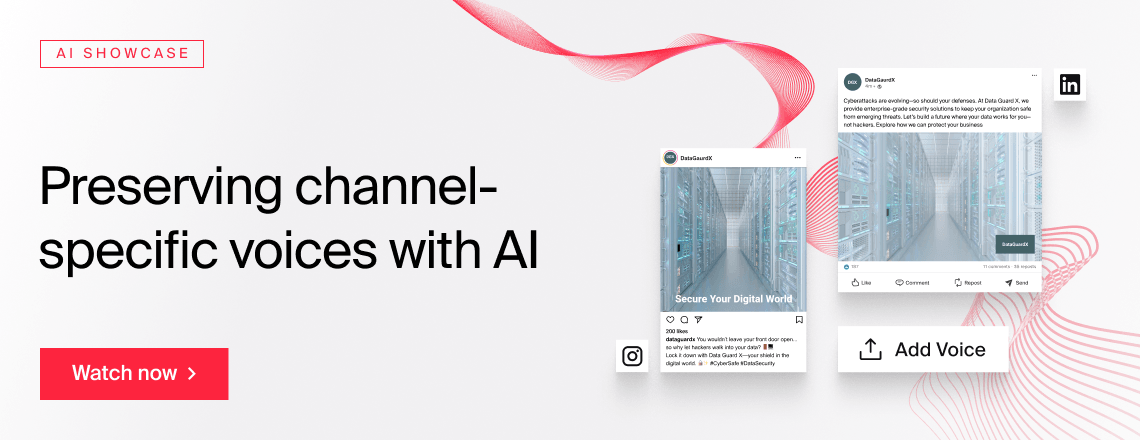
Scale your brand voice for each channel
Generic AI models, while creating brand content or visuals, struggle to capture the company voice or preserve product details during the creation process. Typeface’s advanced AI accounts for these important details to help ensure consistent branding effortlessly. When it comes to brand voice, Typeface goes further, scaling authentic voices across each channel.
Train a distinctive voice by channel, content type, or author by sharing URLs or documents
Capture specific nuances in tone, language, and formatting for each voice
Optimize for channel performance and preserve individual writing styles
Training our AI model on your brand voice essentially means providing it relevant data — your marketing blogs, press releases, X posts, LinkedIn posts, and others — so it can learn and adapt your voice to each platform when it generates content for you.
Create channel and author voices
Let’s walk through the easy process of creating channel and author voices:
On the Typeface sidebar menu, go into ‘Brands’ to create your Brand Kit. Within your Brand Kit, ‘Voices’ is where you train the AI on your channel-specific voices.
Create a ‘New Voice’ and specify the type of content you’re training on. For example, this could be an Instagram post, a blog post, or press release, Meta ad. Select the language of the content you’re training on.
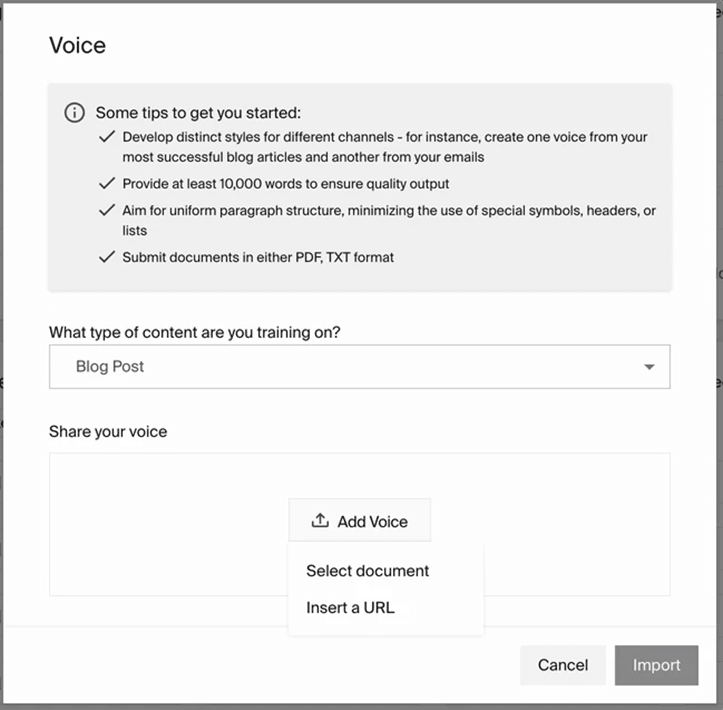
Share examples of content that represent the brand voice you want the AI to adopt for a particular channel or type of content. Either upload documents or add URLs of the training content. If you share your blog URL with the AI, it will automatically identify the linked-out blog posts for training.
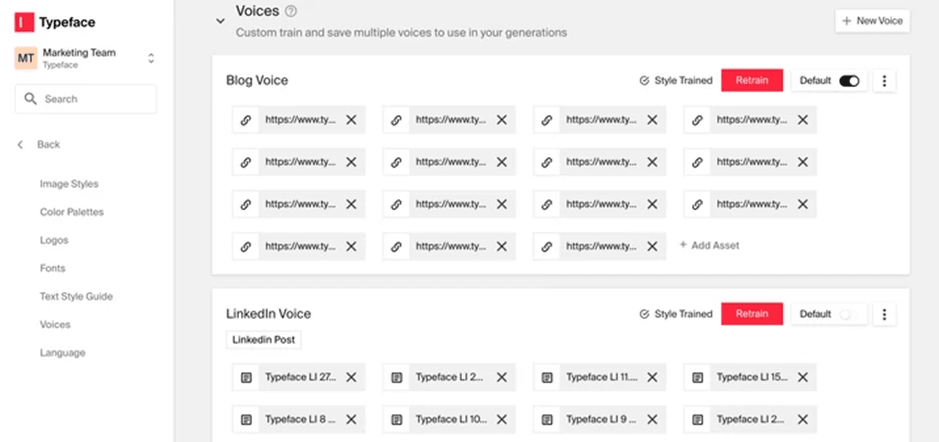
Make sure to share a minimum of 15,000 words for long-form content (e.g. blogs); any fewer than this number and Typeface will notify you and prompt you to feed more words. For short-form content (e.g. social posts and ads), including up to 15 examples is sufficient.
To train an individual writer’s voice, feed the AI their work — their X threads, LinkedIn posts, or blogs — and follow the same process.
Voice training takes a few hours. When the model is full trained, you’ll receive an email notification. If you need to retrain the model, add more URLs to those assets or delete any existing ones.
Creating a blog in Typeface’s voice
One way to apply a trained voice is to generate a blog post in the voice you’ve trained Typeface on for this type of content.
Within your document, click on the Copilot, select 'Create from a template', and then ‘Blog Post’.
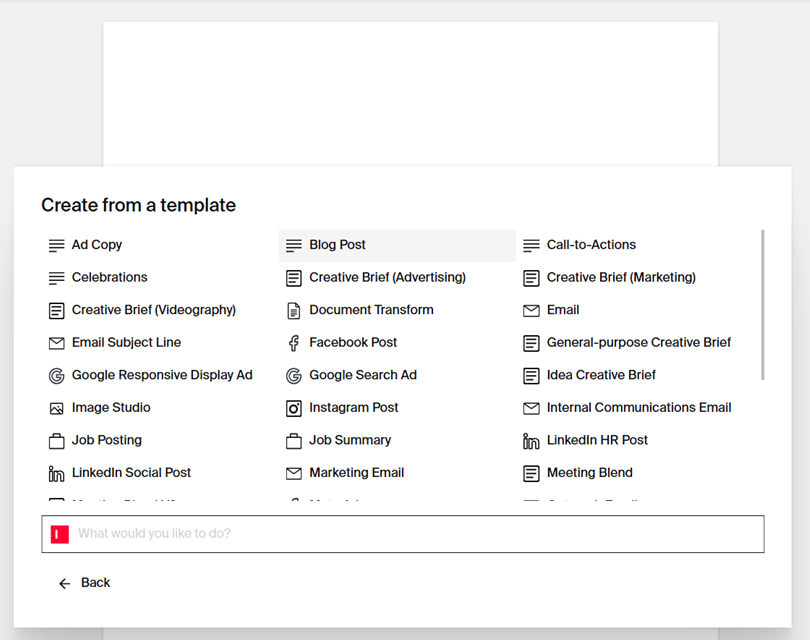
Add the topic of your post and SEO keywords, if you have any. In the example below, we created a blog post on the launch of Typeface Arc.
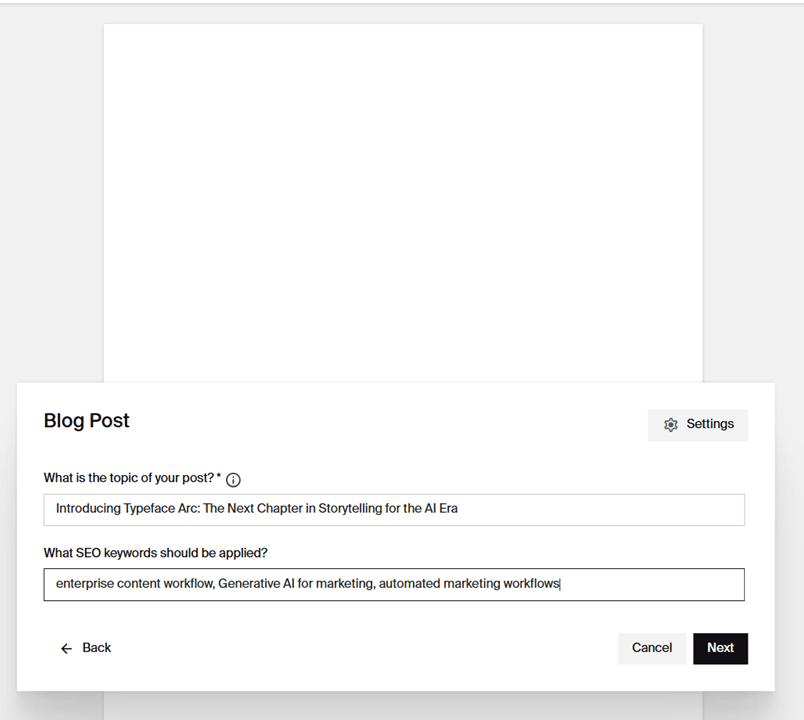
Go to ‘Settings’ and choose your target audience and Brand Kit. Under Voices, select ‘Blog Voice’, which is the voice you trained Typeface on to create your blogs. Pro tip: Apply the voice for templates of the same channel as the one you trained on. For example, use the LinkedIn voice for the LinkedIn post template only.
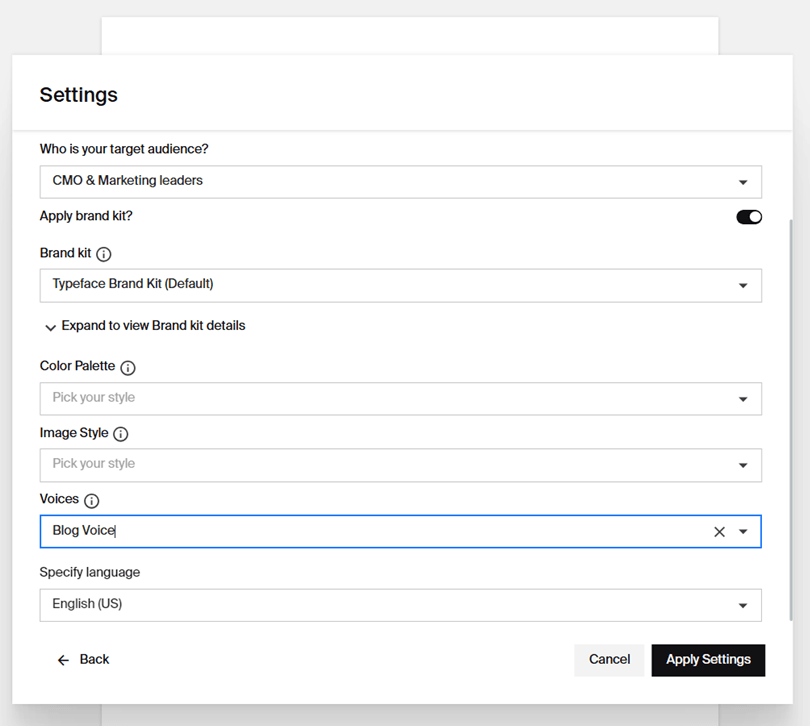
Share additional information for the AI to base the blog content on. Add URLs or upload files containing those details.
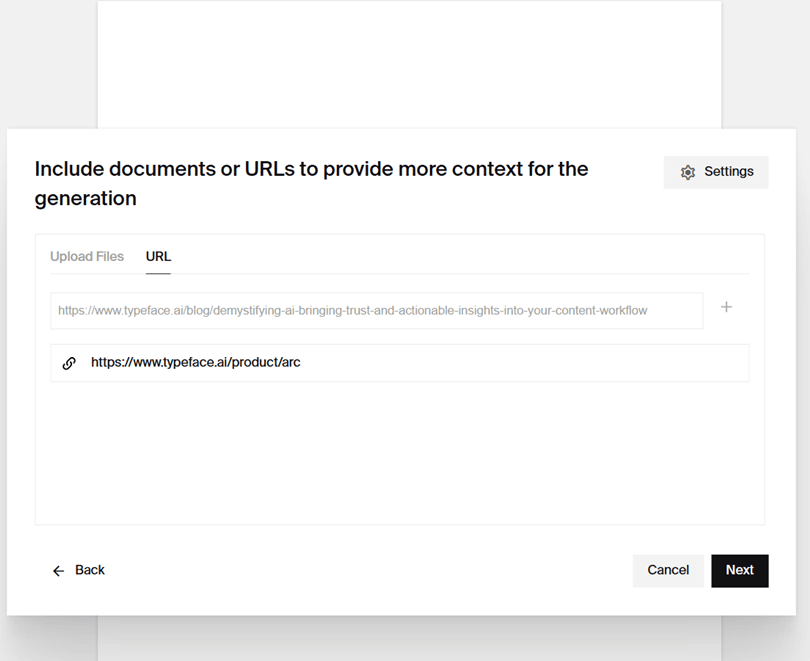
Typeface generates the blog outline consisting of section headers, which are editable.
![Screenshot for Blog Post Outline Channel Specific Voices.png]()
Click ‘Generate’ and watch your blog take shape in your brand voice.

Review the post and make edits directly or using Generative Refine, our inline AI-writing assistant.

FAQs
1. How long does it take to train a voice?
Training Typeface on long form content takes 2-3 hours, and a couple of minutes for short-form content. After training is complete, you’ll receive an email in your inbox informing you. The training runs in the background, so you can use the platform for your other tasks as you await the voice training notification.
2. How much content is required to train a voice?
The recommended content quantity for long-form assets is 15,000 words. This is because not all of the content is usable for training. For example, repetitive language, reference links at the bottom of articles, or very short headers are removed from training. So, feeding more content satisfies the AI’s need for the right amount of training data. For short-form assets, the minimum recommended quantity is 15 examples of the relevant content for voice training.
3. Can you apply multiple voices at the same time?
It’s only possible to apply one voice at a time to a specific piece of content you’re creating. An option is to recreate the content in the second voice. If you want to blend two voices, consider training a net new voice. A common use case is if you have a channel voice and a CEO voice, you can train a LinkedIn CEO voice.
4. What are the best practices to ensure content quality?
The recommended best practices for voice training are:
Meet the recommended word count for long form and short form content.
Use a variety of examples to train the model. A richer set of examples enhances generalization and accuracy of brand tone.
Select the right voice for the content you’re creating. For example, a blog post you’ve trained the AI on can possibly be used for various other assets. But X threads in your CEO’s voice are suitable for LinkedIn but not other types of content.
Contact sales or watch our Voices webinar to explore voice training and other fantastic features of Typeface. If, at any point you need help with the platform, reach out to support@typeface.ai.

Share
Related articles

AI at Work
5 Impactful Blog Post Examples and Using AI to Create Them

Akshita Sharma · Content Marketing Associate
February 4th, 2025 · 15 min read
